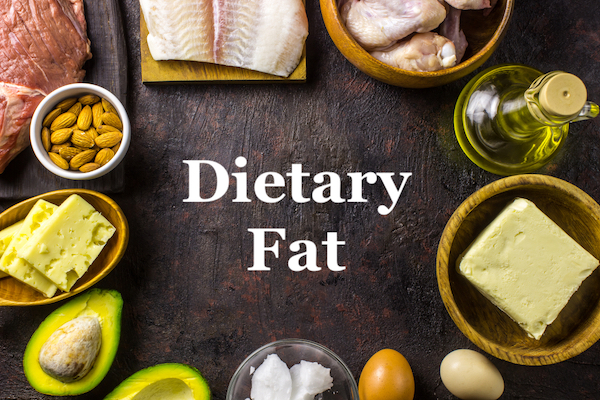
The elderly population is heterogeneous and has different health needs. Frailty assessment scales can be used to assess the effectiveness of integrated health care for this group. These scales also serve to identify high risks individuals. Many frailty profiles exist, including mild, moderate, and severe physical frailty. In addition, there are psychological and cognitive frailties. A large number of interventions, such as exercise, dietary modification, psychosocial programs, and cognitive training, are available to improve the quality of life of the frail elderly.
Frailty can be a condition of old age that has negative effects on health outcomes such as falls and fractures, hospitalization and early mortality. Frailty is associated in an increased risk of vulnerability. This is because of reduced physiological reserve and functional impairment. It has been found that people who have been diagnosed with frailty have a higher risk of early mortality, nursing home admission, and hospitalization than those who do not. Integrated care for this group of patients requires a team of professionals, with primary care clinicians leading the team.

The Frailty Phenotype is a useful method to assess the prevalence of frailty. This model is based on the concept that progressive impairments occur due to metabolic and physiological changes, rather than the accumulation of illness. PRISMA 7 is one of the many assessments available to help identify frailty. InterRAI HC Frailty Scale can also be a useful tool. This scale was originally developed for primary healthcare and was evaluated in a geriatrician.
Different studies have been performed to determine the effectiveness and efficiency of frailty assessments scales. Some studies were quantitative, while others focused on observational or cross-sectional research. Multiple scales were identified including the Edmonton frail, the Short Physical Performance Battery and the Frailty Phenotype. All of these were rated by the Cochrane Risk of Bias Tool for Randomized Trials.
Several frailty profiles have been identified, including the profile E, which was characterized by poor health and social problems. Profile F was marked by multiple abnormalities. While profile G had an average physical and psychological profile,
Different countries have different frailty assessments scales. They vary in how they measure, who participates and what domains of functioning they use. In some settings, they might not be appropriate. These scales are becoming more popular, particularly in high-income countries where they can easily be used. However, it is important to assess the feasibility and accuracy of these tests.

A personalized approach to managing frailty is important for many reasons. An effective strategy for managing frailty requires the involvement and motivation of a primary care provider. This can be increased by training and educating the workforce. Also, it is imperative that the implementation of these scales be standardized, and the consensus of all relevant healthcare levels should be achieved. Further research is necessary to develop guidelines.
FAQ
Is cold a sign of a weak immune response?
Being cold gives you a weaker immune system because when you are cold, your body produces less white blood cells which fight infections. But, cold makes you feel better. Your brain releases endorphins that reduce pain.
What can you do for your immune system to improve?
The human body is composed of trillions if not billions of cells. These cells combine to form organs or tissues that serve specific functions. A cell that dies will be replaced by another. Cells communicate with one another using chemical signals called hormonal hormones. All bodily processes are controlled by hormones, including metabolism and immunity.
Hormones are chemicals secreted by glands throughout the body. They are chemicals that travel through the bloodstream and function as messengers to control how our bodies work. Some hormones can be produced within the body while others can be made outside.
Hormone production occurs when a hormone producing gland releases its contents to the bloodstream. Once hormones are released they move through the bloodstream until reaching their target organ. In some cases hormones can remain active for a very short time. Others hormones are more active and have a longer life expectancy. They can still influence the body's functions long after they have been eliminated from the bloodstream.
Some hormones can be produced in large amounts. Others are only produced in very small quantities.
Some hormones only are produced during certain periods of life. Estrogen is one example. It's produced in puberty, pregnancy and menopause. Estrogen assists women with breast development, bone density, and osteoporosis prevention. Estrogen promotes hair growth, and skin stays soft and smooth.
What makes an antibiotic effective?
Antibiotics can be used to kill bacteria. To treat bacterial infections, antibiotics are used. There are many types of antibiotics. Some are taken orally, some are injected, and others are applied topically.
People who have been exposed are often given antibiotics. To prevent shingles, an oral antibiotic may be prescribed to someone who has had chicken pox. An injection of penicillin may be necessary to prevent pneumonia if someone has strep.
When antibiotics are given to children, they should be given by a doctor. Children are more likely to experience side effects than adults from antibiotics.
Diarrhea, the most common side-effect of antibiotics, is probably diarrhea. Other side effects possible include dizziness, nausea, vomiting, stomach cramps, stomach pains, dizziness and allergic reactions. These side effects are usually gone once the treatment has finished.
What are the 7 keys to a healthy, happy life?
-
You should eat right
-
Exercise regularly
-
Good sleep
-
Get plenty of water.
-
Get enough sleep
-
Be happy
-
Smile often
Which lifestyle is best for your health?
Healthy lifestyles include eating healthy food, regular exercise, good sleep, and avoiding stress. This will ensure that you live a long healthy life.
You can start by making small changes in your diet and exercise routine. If you're looking to lose weight, walk for 30 minutes each morning. You can also take up dancing or swimming if you are looking to be more active. A Fitbit or Strava online program that tracks your activity can be joined.
How do I count calories?
You may wonder, "What diet is best for you?" or "is counting calories necessary?" This depends on several factors like your current health and personal goals. Your preferences and overall lifestyle.
The Best Diet For Me: Which One Is Right?
The best diet is dependent on my current health status, personal goals, preferences, and overall lifestyle. There are many diets available, some good and others not so good. Some diets work for some people, while others are not. What should I do? How do I make the right decision?
This article aims at answering these questions. It begins by briefly describing the different diets available today. The pros and cons of each diet are then discussed. Finally, we'll look into how to choose the best one for you.
Let's start by taking a look at the various types of diets.
Diet Types
There are three main types of diets: low fat, high protein, and ketogenic. Let's talk about them briefly.
Low Fat Diets
A low-fat diet is a diet that reduces the amount fats consumed. This is done by reducing your intake of saturated oils (butter and cream cheese, etc.). and replacing them with unsaturated fats (olive oil, avocados, etc.). If you want to lose weight fast and easily, then a low-fat diet is often recommended. However, this kind of diet may cause problems such as constipation, heartburn, and indigestion. It can also lead to vitamin deficiencies, if someone doesn't get enough vitamins in their food.
High Protein Diets
High protein diets discourage carbohydrates and encourage the use of proteins. These diets usually have higher amounts of protein than other diets. These diets are designed to build muscle mass and help you burn more calories. They may not be able to provide sufficient nutrition for people who need it. They are not suitable for all people because they can be restrictive.
Ketogenic Diets
These diets are also known under the name keto diets. They are high in fat, moderately high in protein, and low in carbohydrates. They are typically used by athletes and bodybuilders because they allow them to train harder and longer without getting tired. But, they require strict adherence to avoid negative side effects like nausea, headaches, and fatigue.
Why is it so important to lead a healthy lifestyle
Living a healthy lifestyle can help you live longer and more happy lives. Good nutrition, exercise regularly, good sleep habits, and stress control can help you avoid diseases such as heart disease and stroke.
Healthy lifestyles will help us to cope with daily stresses better and improve our mental health. A healthy lifestyle will help you feel more confident and younger.
Statistics
- This article received 11 testimonials and 86% of readers who voted found it helpful, earning it our reader-approved status. (wikihow.com)
- WHO recommends reducing saturated fats to less than 10% of total energy intake; reducing trans-fats to less than 1% of total energy intake; and replacing both saturated fats and trans-fats to unsaturated fats. (who.int)
- nutrients.[17]X Research sourceWhole grains to try include: 100% whole wheat pasta and bread, brown rice, whole grain oats, farro, millet, quinoa, and barley. (wikihow.com)
- WHO recommends consuming less than 5% of total energy intake for additional health benefits. (who.int)
External Links
How To
What does the "vitamin") mean?
Vitamins are organic compounds found naturally in food. Vitamins aid us in absorbing nutrients from the food we eat. Vitamins cannot be produced by the body. They must be obtained from food.
There are two types of vitamins: water soluble and fat soluble. Water-soluble vitamins dissolve readily in water. These include vitamin C (thiamine), Vitamin B1 (riboflavin), Vitamin B2 (riboflavin), Vitamin B3 (niacin), Vitamin B6 (pyridoxine), Vitamin C, B1 (thiamine), Vitamin B2 (riboflavin), Vitamin B3 (niacin), and Vitamin B6 (pyridoxine). The liver and fatty tissues are home to fat-soluble vitamins. Vitamin D, E, K and A are some examples.
Vitamins can be classified by their biological activity. There are eight main types of vitamins:
-
A - vital for normal growth and maintaining good health.
-
C - essential for proper nerve function, and energy production.
-
D - Vital for healthy bones and teeth
-
E - Required for good vision, reproduction.
-
K - required for healthy muscles and nerves.
-
P - essential for strong bones, teeth and tendons
-
Q - aids digestion, absorption and absorption iron
-
R is required for the production of red blood cells.
The recommended daily allowance (RDA), for vitamins, varies based on gender, age, and physical condition. The U.S. Food and Drug Administration (FDA) sets the RDA values.
For adults 19 years and over, the RDA vitamin A intake is 400mg/day. Pregnant mothers need 600 micrograms a day to ensure fetal growth. Children ages 1-8 require 900 micrograms per day. Infants below one year of age need 700 micrograms daily. But, between 9 months to 12 months of age, the amount drops to 500micrograms per days.
Children ages 1-18years who are obese need 800 micrograms per day while those who are overweight need 1000 micrograms per day and children who are underweight need 1200 micrograms per day to meet their nutritional needs.
Children aged 4-8 who have anemia are required to consume 2200 micrograms of Vitamin C daily.
2000 micrograms are required daily for good health in adults over 50. Mothers who are pregnant, nursing, or have a high nutrient need will require 3000 micrograms a day.
1500 micrograms are required daily by adults over 70 because they lose approximately 10% of their muscle each decade.
Women who are pregnant or nursing need more than the RDA. Pregnant women need 4000 micrograms per dayduring pregnancy and 2500 micrograms per day after delivery. Breastfeeding mothers need 5000 mg per day when breastmilk is being produced.